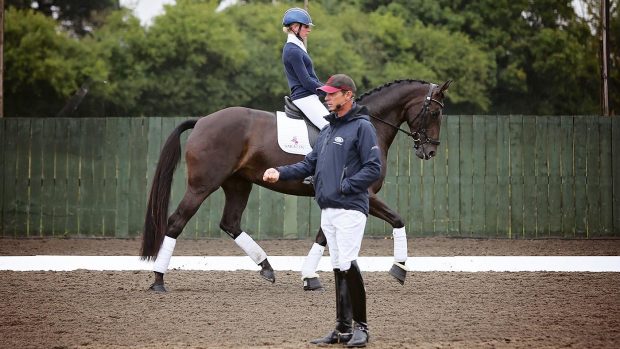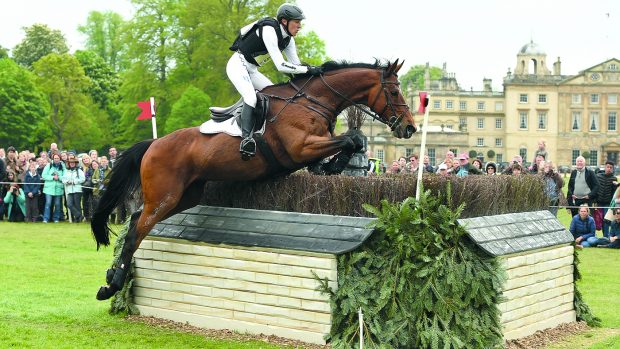Anna is an international grand prix dressage rider, British team member, Olympic coach and breeder. She is a popular trainer and, with her team, holds regular masterclasses at British Dressage championships.
Training the stars
My grand prix horse Pegasus MK was difficult to keep straight in his left change. He always wanted to canter with his hindquarters in, so I had to learn to keep a firmer outside rein to stop his swinging. Eventually the problem was corrected and he learnt to do 15 balanced one-time changes.
I use straightening exercises to develop a horse’s way of going, from the youngsters through to the advanced rides. Most horses are naturally crooked to one side, so it’s our job to teach them to move straight. This should be done from the start of their training.
Tackling the issue
1. Shoulder-in is the best exercise to straighten a horse. The horse moves with his quarters close to the side of the arena, his body curved towards the centre and shoulders pointing at an angle of 30° off the track. Aim for a uniform curve through the horse’s whole body, not just a bend at the neck. To help with this, ride a 10m circle before you begin or do a few steps of shoulder-in then advance on a diagonal line for a few steps before repeating the movement.
2. All horses want to canter crooked. Riding shoulder-fore — it’s like shoulder-in, but with less bend through the body and the shoulders pointing at an angle of about 15° off the track — can help this. Often, just thinking about riding shoulder-fore can produce straightness.
3. Counter-canter can be useful for horses who are crooked one way. If the horse is crooked to the right, left counter-canter puts his hindquarters the other way and makes him more balanced.
4. Maintain straightness, even on a circle. The horse should move as if he’s on train tracks, not crossing his hindlegs. If the horse’s ears aren’t level, it means the head is tilting, so the horse can’t move through his whole body. Raise your hand on the side where the horse’s head is low until there is no tilt.
Continued below…
Liked this? You may also enjoy reading these articles…

Subscribe to Horse & Hound this spring for great savings
Consider this…
- The rider must sit very straight and central in the saddle.
- Try riding a metre in from the track to improve balance. This will ensure you don’t allow the horse to ‘hang’ on to the side of the arena.
- Remember that the horse’s back end is wider than the front, so the front legs will move slightly between the track of the hindlegs.
- I hate using bits that are too wide and pull through the horse’s mouth. We start our young horses in fulmer snaffles. They help keep them straight and the cheeks stop the bit being pulled through.
We continue to publish Horse & Hound magazine weekly during the coronavirus pandemic, as well as keeping horseandhound.co.uk up to date with all the breaking news, features and more. Click here for info about magazine subscriptions (six issues for £6) and access to our premium H&H Plus content online.




